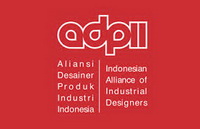Transformasi produk alat masak nasi pada masyarakat Sunda sebagai basis segmentasi pasar
Abstract
Cooking is a routine in the household to fulfill basic human needs. This study examines the development and changes in cooking activities in Sundanese society, characterized using tools, the cooking process, the efficiency of cooking procedures, and the values adopted in cooking activities. The approach used in this study is an ethnographic design approach and participatory observation. The purpose of this study is to observe changes in rice cooking activities and their transformation in terms of cooking utensils design, cooking process, and cooking habits, as well as their effect on changes in rice cooking design and activities with a case study of traditional houses in Sundanese people. The habits and development of traditional rice cooking utensils and traditional cooking habits and their significant changes in semi-modern and modern products in traditional Sundanese houses in Kampung Naga, Tasikmalaya, West Java were observed in a participatory manner. The findings of changes and developments in culture, habits, processes, and designs on rice cookware products are used as a basis for market segmentation for rice cookware products which are divided into two main market segments which can later be used for the needs of the target users to design products with cultural values, product efficiency, and the value of the product to the user. The two main segments are the home and business segments, which are divided into more specific segments. Specific segments for the home segment are ordinary and extraordinary households. In contrast, the business segment is divided into accommodation providers, food and drink service providers, and other service sectors.
Keywords
Full Text:
PDFReferences
Adriansyah, H. M. (2021). Tren Kemasan Syariah Dalam Perhotelan di Indonesia. MAPAN: Jurnal Manajemen, Akutansi, Ekonomi, Perbankan, 2(1), 1-14.
Badan Pusat Statistik & Badan Ketahanan Pangan. (2011). Kajian Konsumsi dan Cadangan Beras Nasional. Retrieved from https://www.bps.go.id/publication/2011/11/25/a66945e6ace0b3a0967b1450/kajian-konsumsi-dan-cadangan-beras-nasional-2011.html
Brown, A. (2012). Just Enough Lesson in Living Green from Traditional Japan. Tuttle Publishing Sydney.
Budianto, A. (2015). Manajemen Pemasaran. Yogyakarta: Ombak.
Gunn, W. (2013). Design Antropology Theory and Practice. Bloomsbury London
Epon Ningrum, G. (2012). Dinamika Masyarakat Tradisional Kampung Naga di Kabupaten Tasikmalaya. MIMBAR: Jurnal Sosial Dan Pembangunan, 28(1), 47–54. https://doi.org/10.29313/mimbar.v28i1.338
Fassi, D., Meroni, A. and Simeone, G., (2013), November. Design for Social Innovation as a form of Design Activism: An action format. In Social Frontiers: The next edge of social innovation research conference proceedings (pp. 14-15).
Hesti, J., Purwasih, G., Wijaya, M., & Kartono, D. T. (2019). Strategi Bertahan Hidup Perajin Gerabah Tradisional. Jurnal Antropologi: Isu-Isu Sosial Budaya, 21(2), 159–167. https://doi.org/10.25077/jantro.v21.n2.p159-167.2019
Indah, S., & Putri, S. I. (2020). Biaya Listrik Lebih Ekonomis dalam Memasak Nasi Memakai Alat Tradisional dengan Kadar Karbohidrat Lebih Rendah. Logista. Jurnal Ilmiah Pengabdian Kepada Masyarakat, 4(2), 116–121. https://doi.org/10.25077/logista.4.2.116-121.2020
Insani, A. (2022). Pemenuhan Asupan Gizi Anak melalui Bekal Makanan Sehat bagi Kesehatan Anak Usia Dini. Journal of Innovation Research and Knowledge, 2(3), 843-848.
Julier, G., (2013). From design culture to design activism. Design and Culture, 5(2), 215-236. https://doi.org/10.2752/175470813X13638640370814
Kotler, P (2011) Principles of Marketing 14th Ed, Pearson Prentice Hall, New Jersey
Mulyono, G. (2009). Kajian Ergonomi Pada Tungku Masak Dapur Tradisional Masyarakat Desa Sukorejo Kediri. In National Conference on Applied Ergonomics (CAE 2009), 20-05-2009
Pilcher, J. (2005). Food in World History. Routledge, NewYork
Rahman, F. (2016). Jejak Rasa Nusantara Sejarah Makanan Indonesia. PT Gramedia Pustaka Utama Jakarta
Richard, R., Goh, T. S., & Margery, E. (2018). Pengaruh Analisa Swot Dan Segmentasi Pasar Terhadap Pencapaian Target Penjualan Di PT. Seltech Utama Mandiri. Jurnal Bisnis Kolega, 4(2).
Siregar, A. P. H. (2020). Analisis Strategi Bersaing Toko Roti X Berdasarkan IE-Matriks. Jurnal Administrasi Bisnis, 16(1), 1-21. https://doi.org/10.26593/jab.v16i1.3756.1-21
Wijaya. S. (2019). Indonesia Food Culture Mapping A Starter Contribution to Promote Indonesia Culinary Tourism. Journal of Ethnic Foods, Springer Nature
DOI: https://doi.org/10.24821/productum.v5i2.6932
Refbacks
- There are currently no refbacks.
p-ISSN 2477-7900 | e-ISSN 2579-7328

This work is licensed under a Creative Commons Attribution 4.0 International License.
Like & Follow Us










